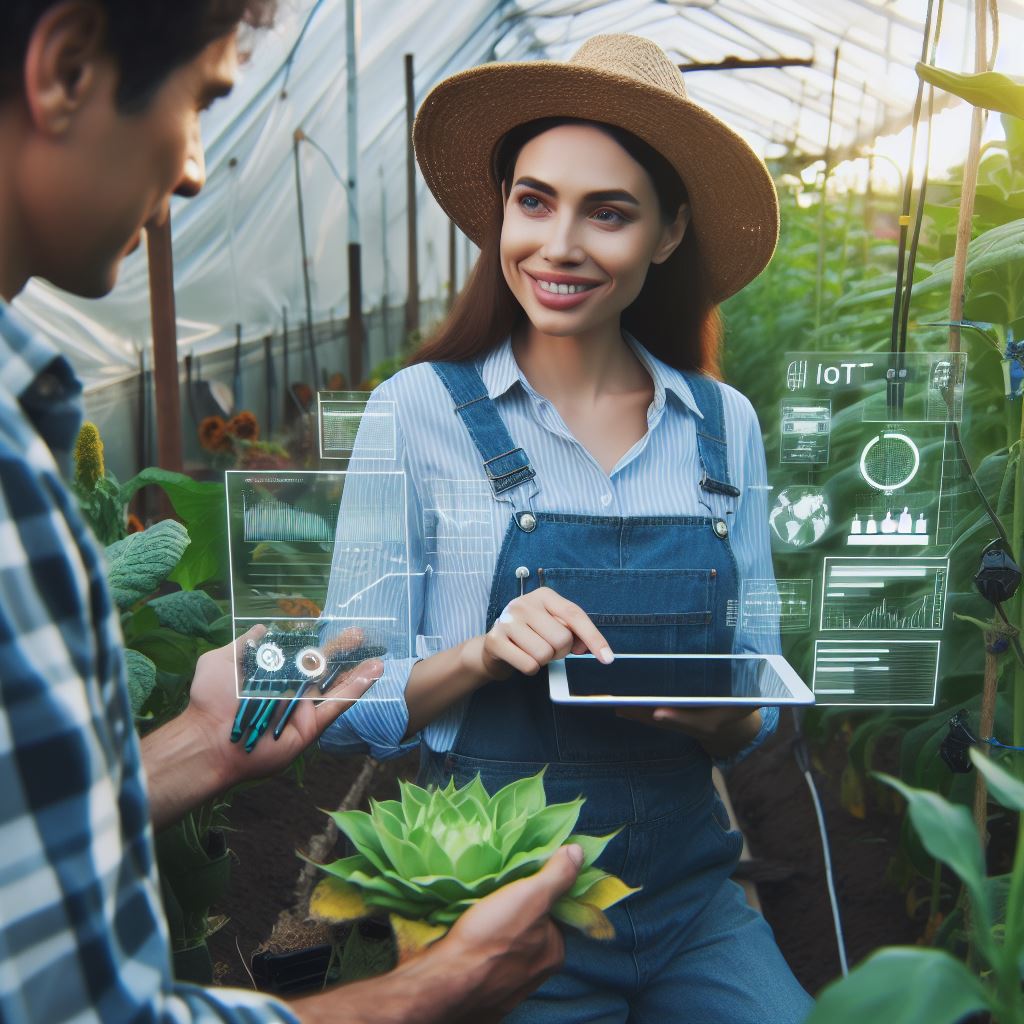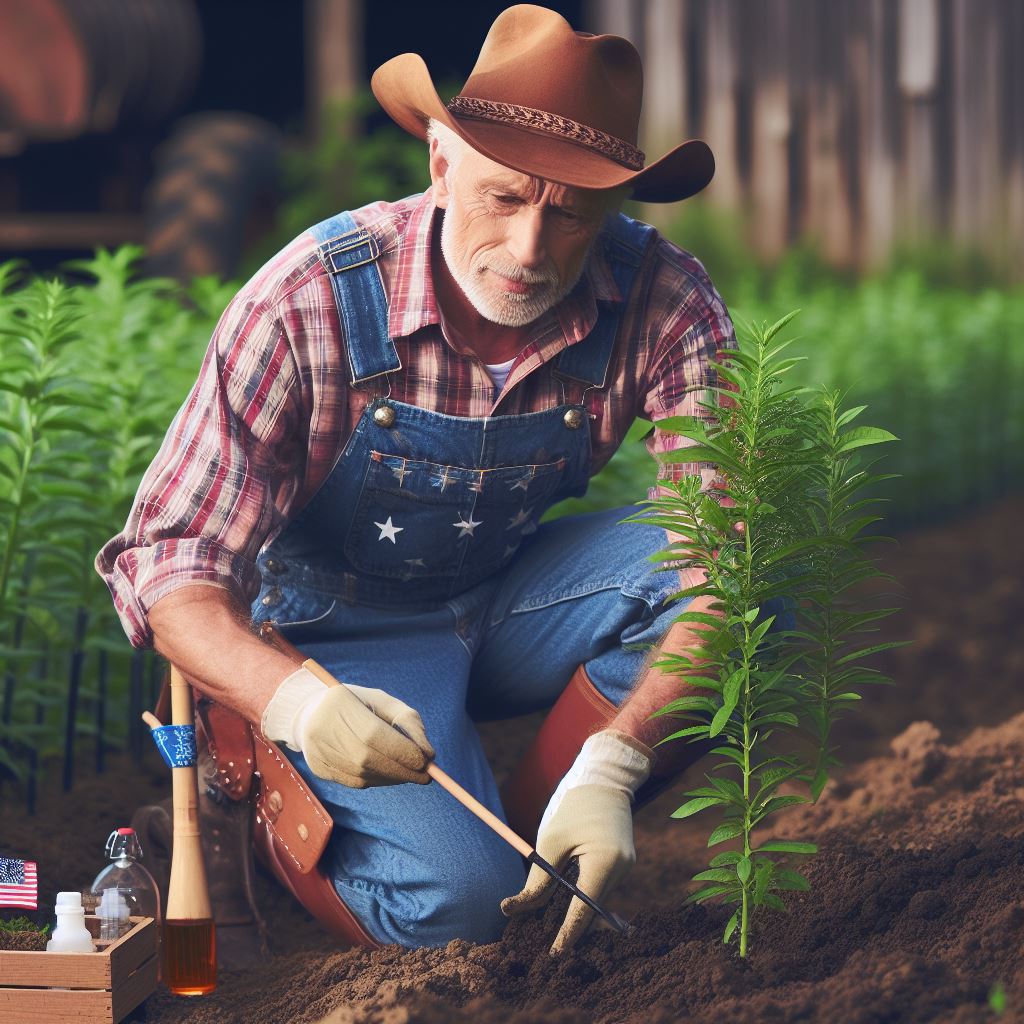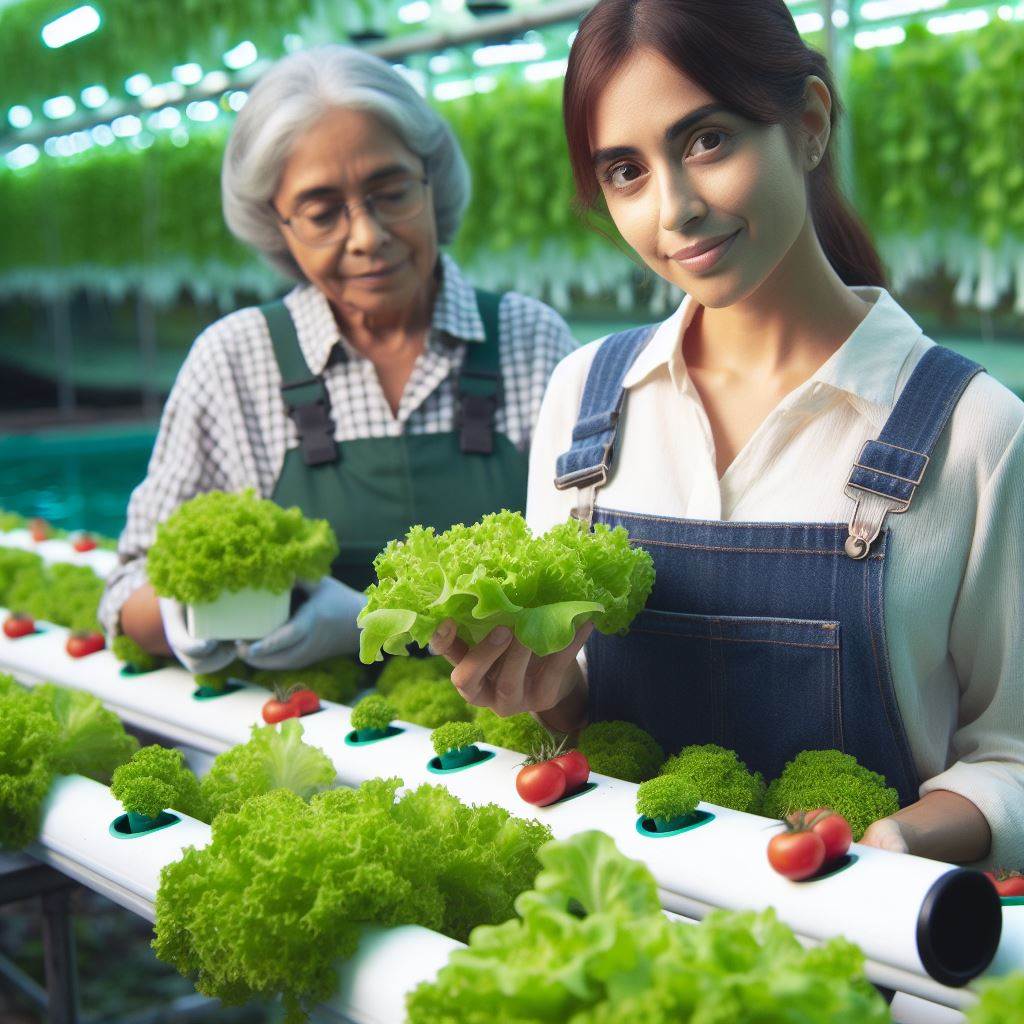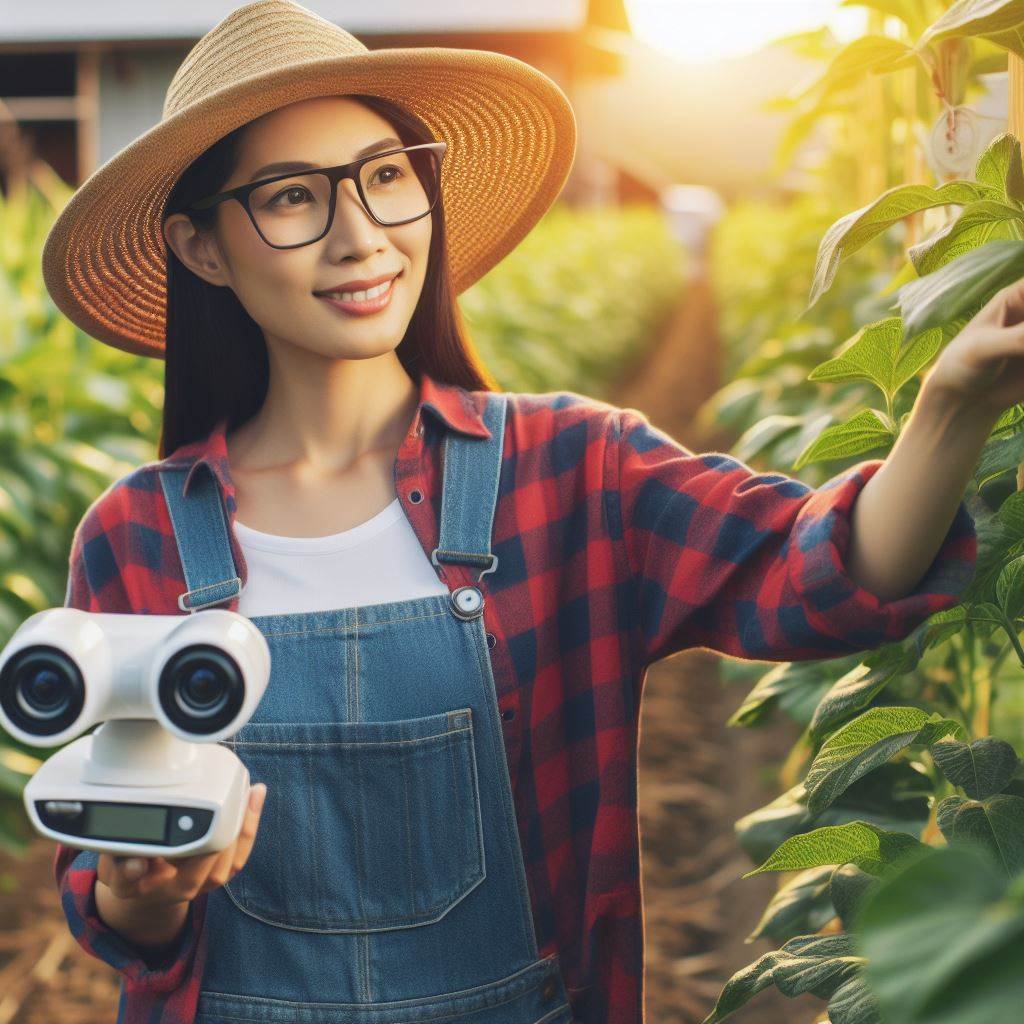Introduction
In this blog post, we will explore the fascinating world of Agri IoT, which refers to the use of IoT technologies in agriculture.
Agri IoT, short for Agricultural Internet of Things, involves the integration of sensors, devices, and interconnected systems to enhance farming practices.
It has gained immense importance and relevance in the farming industry due to its ability to improve productivity, reduce costs, and optimize resource utilization.
The evolution of Agri IoT can be traced back to the early 2000s when farmers started implementing basic sensors for monitoring soil conditions and weather patterns.
Over the years, Agri IoT has evolved into a sophisticated network of interconnected devices and platforms, offering farmers real-time data and actionable insights.
Today, Agri IoT solutions encompass a wide range of applications, including precision agriculture, livestock monitoring, crop management, and smart irrigation systems.
This technology has revolutionized the farming industry by empowering farmers with valuable information that helps them make informed decisions.
By leveraging Agri IoT, farmers can monitor soil moisture levels, track crop growth, detect diseases, manage livestock health, and optimize resource usage.
Furthermore, Agri IoT enables farmers to automate various processes, minimize manual labor, and save time, resulting in increased efficiency and profitability.
As the world continues to face challenges such as population growth and climate change, Agri IoT offers smart and sustainable solutions to ensure food security and increase agricultural productivity.
Benefits of Agri IoT for Farmers
The implementation of Agri IoT in farming practices brings numerous advantages for farmers.
From increased productivity and efficiency to cost-saving opportunities, the technology revolutionizes the agricultural sector.
Let us explore some key benefits of Agri IoT:
Increased productivity and efficiency
Agri IoT enables farmers to streamline their operations and optimize resource allocation.
By gathering data on soil moisture, temperature, and weather patterns, farmers can make well-informed decisions regarding irrigation, fertilization, and planting schedules.
Transform Your Agribusiness
Unlock your farm's potential with expert advice tailored to your needs. Get actionable steps that drive real results.
Get StartedThis results in enhanced crop yield and improved overall productivity.
Reduction of resource waste
Traditional farming methods often lead to the excessive use of water, fertilizers, and pesticides.
Agri IoT provides real-time data about soil moisture levels and plant health, allowing farmers to apply these resources more precisely.
This not only conserves valuable resources but also minimizes environmental impact and reduces the risk of soil degradation.
Improved accuracy and decision-making
With Agri IoT, farmers have access to precise and reliable data about their crops, livestock, and environmental conditions.
This data can be analyzed to identify potential issues such as pest infestations, disease outbreaks, or nutrient deficiencies.
Armed with this information, farmers can make timely and accurate decisions to mitigate risks and ensure optimal farm management.
Enhanced monitoring and control
Agri IoT offers farmers the ability to remotely monitor and control various aspects of their operations.
Sensors and connected devices can track soil moisture, temperature, humidity, and even livestock health.
This real-time monitoring enables farmers to intervene promptly and address any deviations or anomalies.
They can adjust irrigation systems, regulate ventilation in greenhouses, or administer timely treatments to sick animals, all from a centralized dashboard.
Cost-saving opportunities
By optimizing resource usage, reducing waste, and making informed decisions, Agri IoT presents cost-saving opportunities for farmers.
Precise data-driven interventions help reduce expenses related to water, fertilizers, and pesticides.
Additionally, monitoring systems can prevent losses caused by equipment malfunctions, diseases, and unfavorable weather conditions.
By proactively identifying and addressing potential issues, farmers can minimize financial risks and increase profitability.
Generally, Agri IoT holds tremendous potential for farmers, providing a range of benefits that can revolutionize the agricultural landscape.
With increased productivity and efficiency, reduced resource waste, improved decision-making, enhanced monitoring, and control capabilities, and cost-saving opportunities, farmers can optimize their methods and achieve sustainable farming practices.
As Agri IoT continues to evolve and become more accessible, its adoption will undoubtedly shape a more intelligent and efficient future for agriculture.
Read: Smart Farming: IoT in Crop Management
Types of Agri IoT Devices and Applications
The development and implementation of Agri IoT devices and applications in the agricultural sector have revolutionized farming practices.
These innovative technologies enable farmers to efficiently monitor and manage their farms, leading to improved productivity, reduced costs, and sustainable agriculture practices.
Smart sensors for soil moisture, temperature, pH levels, etc
One of the key types of Agri IoT devices is smart sensors.
These sensors are designed to measure various parameters such as soil moisture, temperature, pH levels, and nutrient levels.
By collecting real-time data on these factors, farmers can make informed decisions about irrigation, fertilization, and pest control, ensuring optimal conditions for their crops.
Showcase Your Farming Business
Publish your professional farming services profile on our blog for a one-time fee of $200 and reach a dedicated audience of farmers and agribusiness owners.
Publish Your ProfileConnected weather stations for real-time weather data
Connected weather stations are another essential Agri IoT device.
These stations provide farmers with accurate and real-time weather data, including temperature, humidity, wind speed, and precipitation.
By leveraging this information, farmers can anticipate weather changes, plan operations accordingly, and adjust irrigation schedules and crop protection measures.
Automated irrigation systems for efficient water management
Automated irrigation systems are another valuable Agri IoT application.
These systems use data from smart sensors and weather stations to deliver water precisely when and where it is needed.
By optimizing water usage, farmers can minimize waste, conserve resources, and increase crop yields.
Livestock monitoring devices for animal health and behavior tracking
Livestock monitoring devices have also gained popularity in the agricultural industry.
These devices track animal health and behavior, providing insights into their well-being, reproduction patterns, and feeding habits.
This information allows farmers to detect illnesses early, optimize breeding programs, and ensure the overall welfare of their livestock.
Drones for crop monitoring and aerial surveys
Drones have emerged as a game-changer in crop monitoring and aerial surveys.
Equipped with high-resolution cameras and other sensors, drones can capture detailed images and collect data on crop health, growth patterns, and potential pest infestations.
This data enables farmers to detect issues quickly, intervene promptly, and apply targeted treatments, minimizing crop damage and maximizing yields.
Crop yield prediction and analysis tools
Crop yield prediction and analysis tools are another remarkable Agri IoT application.
By analyzing historical data, current conditions, and predictive models, farmers can estimate crop yields, plan logistics, and make informed decisions about marketing and pricing strategies.
These tools help farmers optimize storage, transportation, and distribution processes, minimizing losses and maximizing profits.
Remote-controlled machinery and equipment
Remote-controlled machinery and equipment are increasingly utilized in modern agriculture.
With the help of IoT technology, farmers can remotely operate and monitor their machinery, such as tractors, harvesters, and irrigation systems.
This allows them to save time, reduce labor costs, and ensure efficient operations on large farms.
In short, Agri IoT devices and applications offer numerous benefits to farmers.
From smart sensors and connected weather stations to automated irrigation systems and livestock monitoring devices, these technologies empower farmers to make data-driven decisions and optimize farm operations.
With the aid of drones, crop yield prediction tools, and remote-controlled machinery, farmers can enhance efficiency, maximize productivity, and promote sustainable farming practices.
By embracing Agri IoT, farmers can thrive in the digital age and contribute to global food security.
Read: Smart Farming: IoT’s Role in Agriculture Today
Challenges and Concerns for Agri IoT Implementation
In order to fully embrace Agri IoT and its benefits, farmers and agricultural stakeholders must address several challenges and concerns:
Data security and privacy concerns
One of the biggest concerns with Agri IoT implementation is the security and privacy of the data generated by smart devices.
Farmers need assurance that their data is protected from unauthorized access and that their privacy is maintained.
Connectivity issues in rural areas
The implementation of Agri IoT relies heavily on stable and reliable internet connectivity.
However, many rural areas still suffer from poor internet infrastructure, making it difficult for farmers to access and utilize IoT solutions effectively.
Integration and compatibility of different devices
Agri IoT involves the use of various devices such as sensors, drones, and automated machinery.
Ensuring that these devices can seamlessly integrate and communicate with each other is a significant challenge.
Compatibility issues may arise due to different manufacturers and technologies.
High initial costs of implementing Agri IoT
The upfront costs of adopting Agri IoT technology can be substantial, making it unaffordable for many small-scale farmers.
The expense of purchasing smart devices, setting up infrastructure, and training personnel may hinder widespread adoption.
Over-dependence on technology and potential risks
While Agri IoT offers numerous benefits, there is a concern of becoming overly dependent on technology.
Farmers may lose certain essential skills and knowledge, which can be risky in case of system failures or technical difficulties.
Additionally, cyber-attacks and system vulnerabilities pose potential risks.
Essentially, the implementation of Agri IoT comes with several challenges and concerns that need to be addressed.
Farmers and stakeholders must work together to develop solutions that ensure data security and privacy, improve connectivity in rural areas, overcome compatibility issues, find ways to reduce initial costs, and manage the potential risks associated with over-reliance on technology.
By effectively addressing these challenges, Agri IoT can revolutionize farming practices and contribute to sustainable and efficient agricultural systems.
Read: Efficient Watering with IoT in Agri
Showcase Your Farming Business
Publish your professional farming services profile on our blog for a one-time fee of $200 and reach a dedicated audience of farmers and agribusiness owners.
Publish Your Profile
Success Stories and Case Studies on Agri IoT Implementation
Agri IoT has proven to be a game-changer for farmers across the globe, revolutionizing the way agriculture is practiced.
Numerous success stories and case studies highlight the immense benefits and positive outcomes achieved through the integration of Agri IoT solutions.
Examples of farms that have integrated Agri IoT successfully
- Farm A, located in the heart of California, adopted Agri IoT technology to monitor soil moisture levels in their vast vineyard.
- Farm B, in the Midwest, implemented Agri IoT to optimize irrigation systems and manage water resources efficiently.
- Farm C, situated in Australia, integrated Agri IoT sensors to track temperature and humidity levels in their chicken coop.
These farms serve as shining examples of how Agri IoT solutions can be seamlessly implemented to enhance agricultural practices.
Positive outcomes achieved in terms of increased yields, cost reduction, etc.
The successful implementation of Agri IoT has yielded remarkable results for these farms and many others globally.
Increased yields, cost reduction, and improved overall efficiency have been some of the notable outcomes.
Farm A witnessed a significant increase in grape yields by 20% due to optimized irrigation based on real-time soil moisture data.
This boost in productivity led to higher profits and better crop quality.
Farm B achieved a 30% reduction in water consumption by precisely controlling the irrigation systems through Agri IoT technology.
This not only conserved a precious resource but also minimized costs associated with water usage.
Farm C experienced a 40% decline in chicken mortality rate as a result of utilizing Agri IoT sensors to monitor their environmental conditions accurately.
This led to a higher survival rate and increased profitability for the farm.
Testimonials and experiences shared by farmers
Farmers who have embraced Agri IoT technology have expressed their satisfaction with the positive impact it has had on their operations.
Testimonials and firsthand experiences shed light on the transformative power of Agri IoT solutions.
John, a farmer from Farm A, stated, “Integrating Agri IoT into our vineyard management has completely transformed our business. We now have precise control over irrigation, resulting in healthier vines and higher yields.”
Sarah, a farmer from Farm B, shared, “Thanks to Agri IoT, we have achieved significant water savings without compromising our crop yield. It has not only improved efficiency but also reduced our environmental footprint.”
Michael, the owner of Farm C, emphasized, “By using Agri IoT sensors in our chicken coop, we have managed to create optimal conditions for the birds, reducing their mortality rate and increasing profitability. It’s a game-changer for us.”
These testimonials serve as evidence of the positive impact and value that Agri IoT brings to farmers, encouraging further adoption and implementation in the agricultural industry.
In general, the success stories, case studies, and testimonials surrounding Agri IoT implementation emphasize its transformative potential in agriculture.
Farms like Farm A, Farm B, and Farm C showcase the successful integration of Agri IoT, resulting in increased yields, cost reduction, and overall improvement in farming practices.
As more farmers embrace this technology, the agricultural industry will continue to benefit from the power of Agri IoT solutions.
Read: Future of Farms: AI & Robotics in Agriculture
Discover More: Future Crops: Biotech for Better Yield
Future Trends and Innovations in Agri IoT
Advancements in AI and machine learning for efficient data analysis
The future of Agri IoT holds immense potential for farmers.
Advancements in AI and machine learning will revolutionize data analysis, making it more efficient and accurate.
Integration with satellite technology for precise farming practices
The integration of Agri IoT with satellite technology will enable precise farming practices.
Farmers can use satellite data for real-time monitoring of crops, weather conditions, and soil moisture levels.
Focus on sustainability and eco-friendly practices
There will be a strong focus on sustainability and eco-friendly practices in Agri IoT.
Farmers will be able to implement smart irrigation techniques, reducing water wastage and promoting efficient water usage.
Collaboration and partnerships among Agri IoT companies for improved solutions
Collaboration and partnerships among Agri IoT companies will play a crucial role in improving solutions.
Sharing knowledge and resources will lead to the development of innovative technologies and better outcomes for farmers.
Major trends in Agri IoT
Use of drones for crop monitoring and management
One of the major trends in Agri IoT is the use of drones for crop monitoring and management.
Drones equipped with sensors and cameras can capture high-resolution images and collect data on crop health, pest infestations, and nutrient deficiencies.
Farmers can use this data to make informed decisions about crop management, such as applying targeted pesticide treatments or adjusting fertilization practices.
This minimizes the use of chemicals, reduces costs, and improves overall crop health.
Use of smart sensors in livestock farming
Another trend is the use of smart sensors in livestock farming.
These sensors can monitor parameters such as temperature, humidity, and animal behavior, providing insights into the well-being of the animals.
If there’s a sudden change in temperature, for example, farmers can receive real-time alerts and take necessary actions to protect their livestock from extreme weather conditions.
Blockchain technology
The future of Agri IoT also includes blockchain technology for enhanced traceability and transparency in the food supply chain.
Blockchain can help farmers track the origin of their produce, ensuring that it meets quality standards and has been grown sustainably.
This technology can also enable fair trade practices, allowing consumers to verify the authenticity of organic or ethically sourced products.
Showcase Your Farming Business
Publish your professional farming services profile on our blog for a one-time fee of $200 and reach a dedicated audience of farmers and agribusiness owners.
Publish Your ProfileThis promotes trust and builds a stronger relationship between farmers and consumers.
Autonomous farming technologies
Agri IoT will also witness advancements in autonomous farming technologies.
Self-driving tractors and robots will streamline farming operations, reducing labor costs and increasing efficiency.
These autonomous machines can perform tasks such as planting, fertilizing, and harvesting crops without human intervention.
Farmers can remotely monitor and control these machines, optimizing their farming operations and maximizing productivity.
Data-driven decision-making in agriculture
Furthermore, the use of Agri IoT will contribute to data-driven decision-making in agriculture.
By analyzing vast amounts of data collected from various sources, farmers can gain valuable insights into their operations and make informed choices.
For example, data analysis can help farmers identify the optimal planting dates, predict yields, and optimize resource allocation.
This ultimately leads to better crop yields, increased profitability, and sustainable farming practices.
In essence, the future of Agri IoT is filled with exciting possibilities.
Advancements in AI, integration with satellite technology, sustainability focus, and collaborations among companies will drive innovation in the agriculture sector.
Farmers will benefit from improved decision-making, reduced costs, and enhanced productivity.
Agri IoT will play a significant role in shaping the future of farming, making it smarter, more efficient, and sustainable.
Conclusion
Agri IoT offers numerous benefits for farmers. It provides real-time data on various factors affecting crops and livestock, enabling farmers to make informed decisions and maximize their yield.
Additionally, Agri IoT solutions automate repetitive tasks, saving farmers time and effort.
We encourage farmers to explore Agri IoT solutions and capitalize on the advantages they bring.
By adopting these technologies, farmers can enhance their productivity, reduce costs, and improve sustainability.
Agri IoT can truly revolutionize the way farming is done.
Looking ahead, the future of Agri IoT is promising.
It has the potential to significantly impact the farming industry by optimizing resource allocation, improving efficiency, and mitigating risks.
As technology continues to advance, we can expect to see even more innovative Agri IoT solutions that further enhance agricultural practices.
In a nutshell, Agri IoT is revolutionizing the farming industry by providing smart solutions that enable farmers to optimize their operations, increase productivity, and promote sustainable practices.
It is an exciting time for farmers to embrace Agri IoT and unlock its transformative potential.




